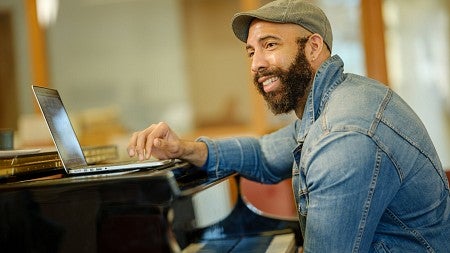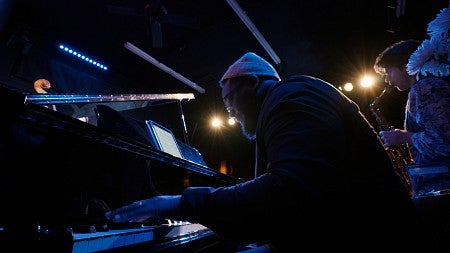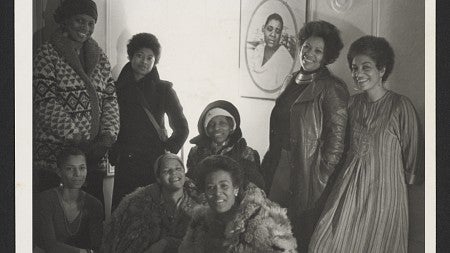
Eye-Catching Photos Attest to Alum’s Camera Skills
Prize-winning photography became a second calling for Michael Wilkes, a College of Design alumnus and devoted Duck
By Ed Dorsch • Photos by Michael Wilkes • January 18, 2023
5 min read
Michael Wilkes, BArch ’71, started fresh out of college as an architect at the San Diego firm that would later become Delawie/Bretton/Wilkes Associates. That’s also where he started to learn photography.
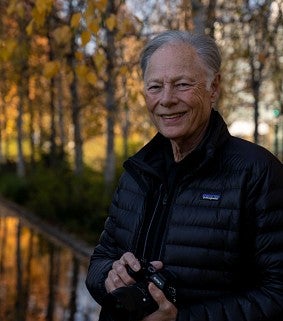
As the newest employee, Wilkes assisted photographers shooting buildings designed by the company. The firm wanted an architect to make sure photos were composed well, but Wilkes also helped lug the gear, including film, lights, and heavy Hasselblad cameras. It was challenging, says Wilkes, but he got to work with superlative photographers.
“They would tell me what they were doing and why,” he says. “I quickly learned that perspectives—especially those that are exaggerated—could tell a story.”
Wilkes became a principal architect in 1980 and his name was added to the firm (today called Delawie). Under his leadership, it grew from thirty-five to more than seventy architects and other professionals. The emergence of digital cameras spurred Wilkes to pursue photography more seriously, and he continued after retiring in 2012.
In 2008, Wilkes received his first award from the American Institute of Architects (AIA) national competition, the premier fine art photography contest for architects. He received six awards in the 2022 competition.
Orange Twist—Second Place Honor Award, 2022 AIA National Competition
This rusting steel building is part of Culver City’s Hayden Tract, a redevelopment project that transformed a Los Angeles industrial area into an architectural experiment. “Imagine a rectangle with the texture of an egg crate on the outside,” says Wilkes. “Then you twist it. That’s this building.” In this photograph, Wilkes emphasizes the overlaying patterns and textures. He discovered the structure while participating in a photo-finding excursion with two colleagues. They call these outings photo safaris, or “photo-faris.”
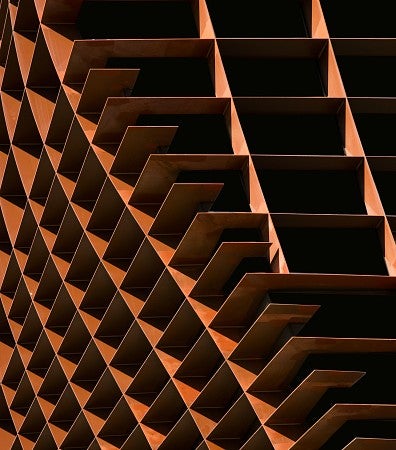
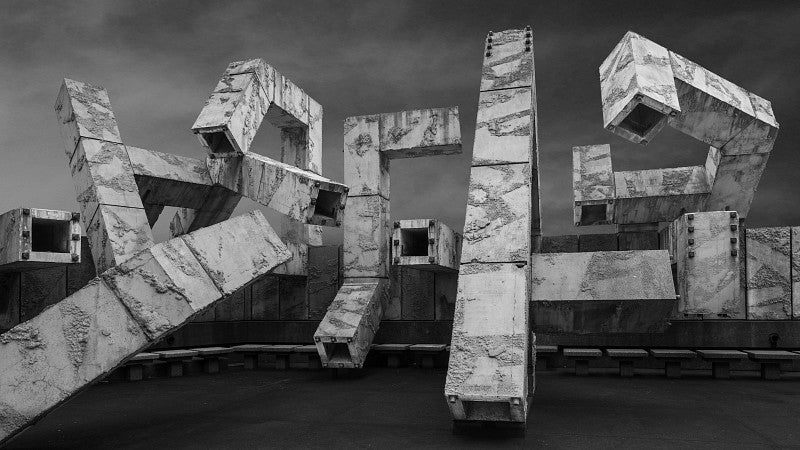
Halprin’s Maze—Fuller Award, 2022 AIA National Competition
This image of Vaillancourt Fountain in San Francisco’s Embarcadero Plaza captures the well-known landmark in a rare state—without water. Wilkes named his photograph after Lawrence Halprin, the landscape architect who helped plan the plaza in the 1960s. “It’s a modernist fountain, a sculptural piece,” says Wilkes. “I had photographed it previously, but that turned out to be a postcard photo and I didn’t think too much about it. On this day, it was shut down for renovation so I could shoot from an angle that’s not normally accessible. You could wander through it. It was like a three-dimensional maze.”
Spiraling Into the Matrix—Merit Award, 2022 AIA National Competition
Wilkes was part of the design review committee for Willie and Donald Tykeson Hall, home of the UO’s College of Arts and Sciences, which opened in 2019. “Reflectance Field,” an art installation by Narduli Studios, located in the building’s Herzog Staircase, inspired Wilkes to try shots from the bottom, as well as the top. He took this image holding the camera out, without looking through the viewfinder. The name is based on the Matrix film franchise because it reminded him of the characters falling into a different world.

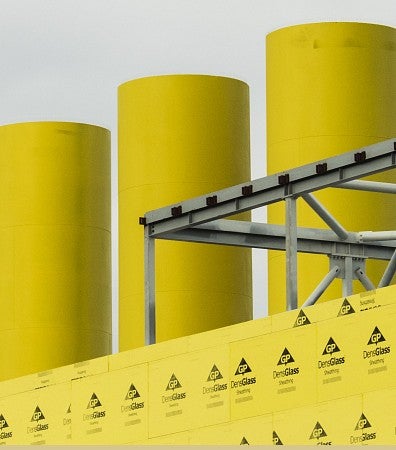
Not Mellow Yellow—Fuller Award, 2006 AIA National Competition
Wilkes was visiting Seattle for a Ducks football game when he discovered this construction site. The yellow tubes are vertical air ducts for an underground tunnel. The picture is almost void of detail, he says, which makes the small details—like the joints in the tubes and the metal frame—pop. “I was about six blocks away when I saw it,” Wilkes says. “Often when you’re exploring and you have a target you’re heading for, you discover a better angle along the way. There was a fence around the construction site, but I found my peekaboo spot and got the photo.”
Reflection—2006 publication, AIA
This image from the Baths of Doña María de Padilla in the Royal Alcazar Palace of Sevilla, Spain, is Wilke’s favorite among these photos for OQ. It required a lot of patience. Every time a school tour passed, children touched the water, creating ripples. He waited hours for a smooth reflection. “I didn’t have a tripod and it was dark,” Wilkes recalls. “I had to use a slow exposure, so I just put the camera on the wall and took different shots. Finally the water settled.”
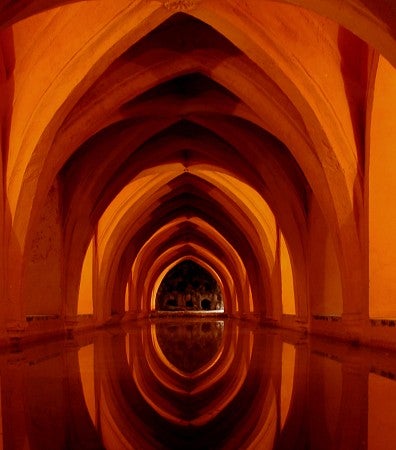
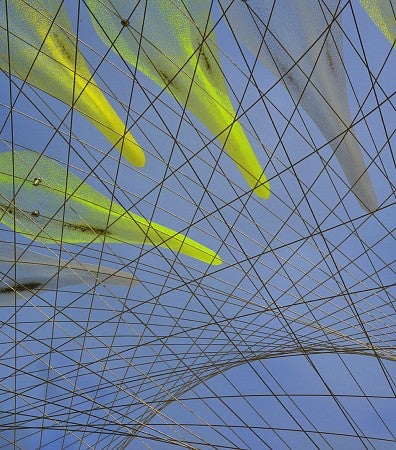
Seven Ducks in a Spider Web—2016 Juror’s Commendation, AIA
Wilkes spotted this sculpture outside a hotel in San Jose while attending the 2014 Pac-12 Championship, when the Ducks defeated Arizona. “I don’t think many people pay attention to it,” Wilkes says. “They’re catching the bus or light rail, going to the hotel, or heading to a meeting. But if you look, you see photo subjects. Sometimes, I see something and I have a feeling. I think maybe if I shoot it this way, or during a certain time of day, there’s the possibility for an interesting photograph.”
Michael Wilkes has served as president of the American Institute of Architects, San Diego chapter, as an officer of the AIA California Council, and as a member of national committees and task forces. He was a trustee for the UO Foundation from 2008 to 2016 and was a co-coordinator of the fiftieth anniversary for his class; he has been a member of the College of Design Dean’s Advisory Council since 2006. Penny and Michael Wilkes, who live in La Jolla, California, have given generously to the university, supporting scholarships for architecture, nature writing, and theater students.
Ed Dorsch, BA ’94 (English, sociology), MA ’99 (journalism), is a staff writer for University Communications.


